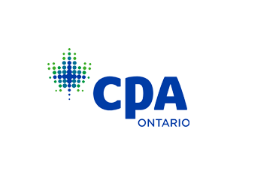The future of work can be best described as hybrid: remote, in-office, and bit of both. This brings new questions and challenges around appropriate attire, acceptable social behaviours, and business etiquette. Now is the time to revisit the important components of business acumen to avoid making mistakes and to demonstrate our professional awareness of the emerging social and business expectations.
Join us for an illuminating virtual presentation to learn the approaches to best serve you and your clients.
Module One
Professional Image (on camera and in-person)
As employees split their time between the office and home, it’s time to start rethinking your work wardrobe. This reflects the findings of IWG consumer research, which reveals that 59% of us believe the days of formal business dress are over and 39% think it will be more acceptable to wear informal clothing in the office after Covid-19. Companies are adopting a ‘flexible’ dress code which encourages people to use their best judgment on what is appropriate to wear for their workday. Here in lies the problem. What is appropriate?
Dressing for the client and tone of a meeting, either in person or virtually, will still make a difference in the impression you create. If you want to create an impression that signals we’re here to serve you and your business matters…then how you dress and present yourself matters. People will continue to notice attention to detail, level of self-care, and professional attitude.
But what to wear? Should your wardrobe look something like the pre-pandemic workplace, i.e. suiting for client meetings, dress for your day allowances? Or strictly business casual, no tie or jackets necessary?
Your company policy (if one exists) will help guide you. But our program will also give you up-to-date ideas on suitable at home attire; how to transition from a home office setting to working in-person; attending conferences, coffee dates, luncheons, hosting clients at events, cocktail parties, etc.
Whether it’s a virtual meeting with internal partners or reaching out to clients, we need to ensure we’re comfortable with our online presence. First impressions online are as important as in person.
Living online (shopping, working, persuading, communicating, etc.) has its challenges. This program unravels the mysteries associated with online living. We’ll cover everything from your appearance (you and your space) to purchasing a wardrobe online (that fits!), to communicating with colleagues and clients.
Participants will learn,
- How to appear credible and trustworthy on camera and in-person
- The key measurements to determine your body shape and style to buy clothes that fit properly.
- Over-come the challenges to purchase suiting online or in person, i.e. know your distinctive features
- Image tips to update your pre-pandemic wardrobe to a hybrid situation, including your hair, facial image, etc.
- How to refresh and add inspiration to your pre-pandemic wardrobe or how to re-vamp your existing wardrobe to meet the expectations of clients, employers
- Informal dress do’s and don’ts; know the new levels of professional dress
- Understand how to choose fabrics based on your silhouette and body type – what fabrics to choose and what not to wear i.e. is denim acceptable in today’s workplace?
- Learn how to determine your personal colour palette in clothing, accessories, etc.
- Sustainable fashions that stand the test of time
- Organic fabrics that are acceptable and functional throughout the day
- How to maintain your wardrobe at home
- How to wear the five basic harmonies of colour to look appropriate in any business situation, i.e. monochromatic, complementary, neutrals etc.
- How to accessorize an outfit in a hybrid situation, i.e. on camera and in-person
- Where to put your clothing dollars in a hybrid work situation, what are the essentials everyone should have
- Know how to shop easier and faster
- Save money by knowing the styles and colours that best suit you and your client base.
A universal perceptual tendency is to “judge a book by its cover”. We form lasting opinions based on what we see. The look of credibility, composure and professionalism must accompany the message for an audience or client to accept it.
Module Two
Client Engagement (in-person engagement)
Successful meetings, both internally and externally, requires that we understand and meet the unwritten expectations of the pseudo social/professional arena. The requirements have changed during Covid. We need to strike the perfect balance between safety and comfort when meeting others in public.
Managing the impression you make and maximizing your ‘like-ability’ are the keys to making every networking opportunity consistently profitable. Making an emotional connection is the key to being positively remembered.
Participants will,
- Be an ambassador in representing the mission and values of the organization
- Incorporate appropriate business protocols during all client interactions
- Be prepared: having an agenda, tailor to various situations, tag lines that put you into context when you attend events
- Greet in the time of Covid 19: handshake alternatives
- Self-introduce to initiate conversation; practice introducing themselves and others to engage in conversation and have people interested in knowing more about them
- Survive the nuances of small talk: topics to discuss and to avoid
- Realize that money flows in the direction of biographical knowledge
- Learn to make connections through intelligent inquiry
- Revive curiosity to pave the way to emotional connections
- Recognize the power of small talk for building relationships
- Tap into the autobiographical urge of others
- Realize that money (business, goodwill) flows in the direction of biographical knowledge
- Transition from social to business conversations
- Appreciate the importance of good timing and appropriate conversational
- Disclose information that is appropriate and reciprocated
- Handle interruptions or difficult to answer questions
- Learn the ABCs of asking for referrals to garner quality professional contacts
- Follow up in a timely and appropriate manner.



